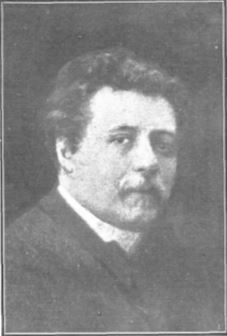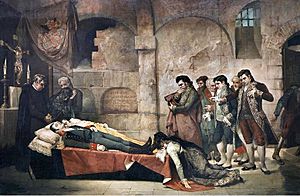José Nin y Tudó facts for kids
José Nin y Tudó (born August 20, 1843, in El Vendrell, Spain – died March 1908, in Madrid) was a talented Spanish painter. He created many different kinds of art. He is especially known for his beautiful decorative paintings. He also painted a special series of pictures called "mortuary paintings." These showed famous people after they had passed away, often lying in state or on their deathbeds.
About José Nin y Tudó
José Nin y Tudó was born in 1843. His father, Joaquín Nin y Güell, was a military officer. When José was young, he thought about joining the military too, just like his father. But as he grew older, he discovered he loved painting much more.
He started his art studies at the Escola de la Llotja in Barcelona. He was very good, and he received a special scholarship from the Diputació de Barcelona. This scholarship helped him go to the Real Academia de Bellas Artes de San Fernando in Madrid. There, he learned from a famous artist named Carlos Luis de Ribera. José Nin y Tudó spent most of his career working in Madrid.
His Famous Works
José Nin y Tudó painted many important murals. Murals are large paintings done directly on walls or ceilings. Some of his murals can be seen at the top of the Café de Madrid (which used to be called the Café Iris). He also painted murals at the Palacio de Anglada.
He won awards for his art. In 1871, he received a third-class medal at the National Exhibition of Fine Arts. This was for his portrait of General Juan Prim. In 1876, he won a second-class medal. This award was for his painting of the bodies of Daoiz and Velarde. These two men were heroes from the Dos de Mayo Uprising. His painting showed them lying in state at the Iglesia de San Martín.
José Nin y Tudó passed away in March 1908. You can see some of his paintings at the Biblioteca Museu Víctor Balaguer in Vilanova i la Geltrú, and in other places too.
See also
 In Spanish: José Nin y Tudó para niños
In Spanish: José Nin y Tudó para niños



